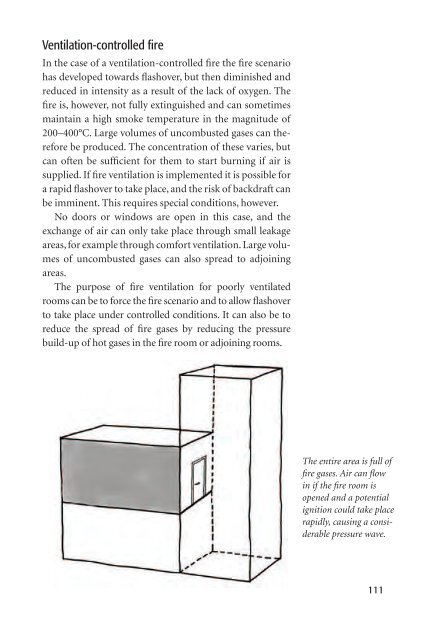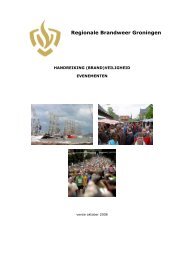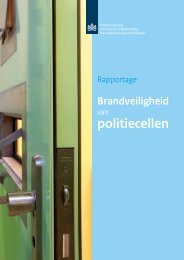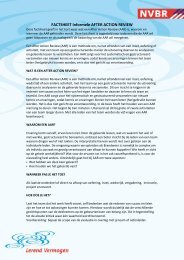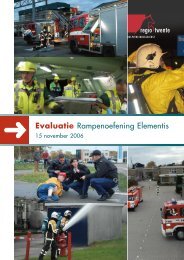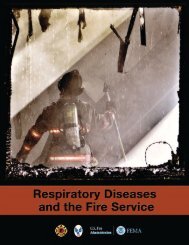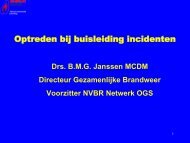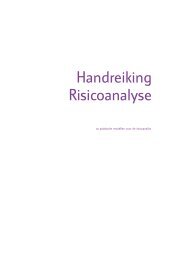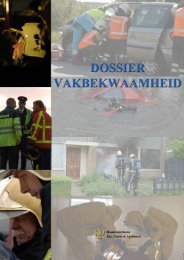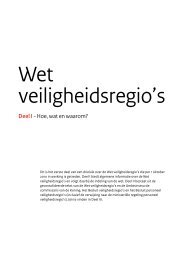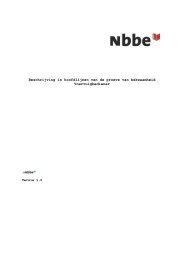Fire ventilation
Fire ventilation
Fire ventilation
- No tags were found...
You also want an ePaper? Increase the reach of your titles
YUMPU automatically turns print PDFs into web optimized ePapers that Google loves.
Ventilation-controlled fi reIn the case of a <strong>ventilation</strong>-controlled fire the fire scenariohas developed towards flashover, but then diminished andreduced in intensity as a result of the lack of oxygen. Thefire is, however, not fully extinguished and can sometimesmaintain a high smoke temperature in the magnitude of200–400°C. Large volumes of uncombusted gases can thereforebe produced. The concentration of these varies, butcan often be sufficient for them to start burning if air issupplied. If fire <strong>ventilation</strong> is implemented it is possible fora rapid flashover to take place, and the risk of backdraft canbe imminent. This requires special conditions, however.No doors or windows are open in this case, and theexchange of air can only take place through small leakageareas, for example through comfort <strong>ventilation</strong>. Large volumesof un combusted gases can also spread to adjoiningareas.The purpose of fire <strong>ventilation</strong> for poorly ventilatedrooms can be to force the fire scenario and to allow flashoverto take place under controlled conditions. It can also be toreduce the spread of fire gases by reducing the pressurebuild-up of hot gases in the fire room or adjoining rooms.The entire area is full offire gases. Air can flowin if the fire room isopened and a potentialignition could take placerapidly, causing a considerablepressure wave.111


